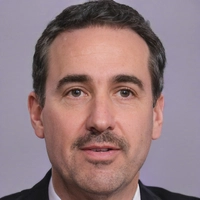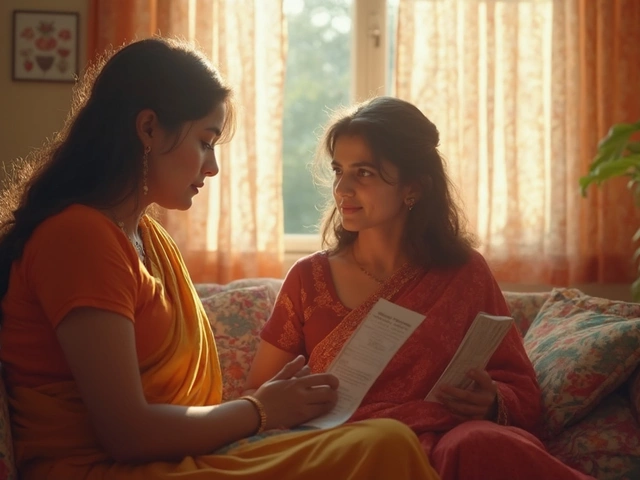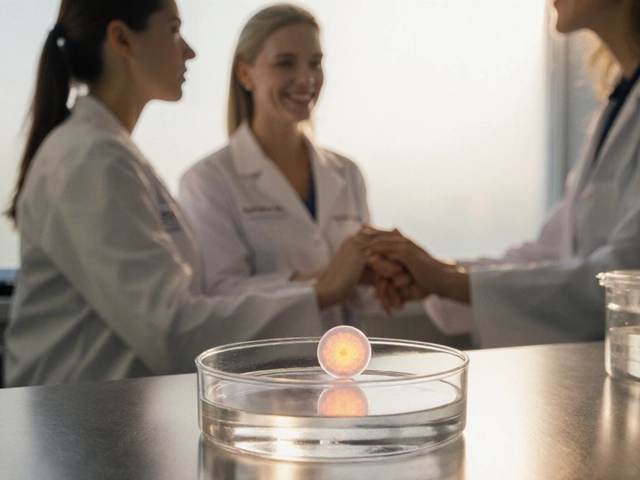IVF Cost Estimator
Estimated IVF Cost Breakdown
Base Cost: ₹1,50,000
Additional Services: ₹0
Total Estimated Cost: ₹1,50,000
After Insurance: ₹75,000
Note: These estimates are based on average clinic prices and may vary. Actual costs depend on individual circumstances, clinic policies, and additional services chosen.
When couples think about IVF in‑vitro fertilisation, a medically supervised process that creates embryos outside the body for later transfer to the uterus, the very first question is usually the price tag. In India, the cost per round can vary dramatically depending on where you go, what services you need, and what financial aid you qualify for.
Key Takeaways
- The average IVF cost for a single cycle in India ranges from INR 1.2lakh to INR 2.5lakh.
- City‑wise, Bangalore and Mumbai are on the higher end, while Delhi and Chennai often offer slightly lower packages.
- Stimulation drugs (gonadotropins) make up 40‑60% of the total expense.
- Government schemes and select insurance policies can cover up to 50% of the cost for eligible couples.
- Hidden fees such as cryopreservation, special lab tests, and extra embryo transfers can push the bill beyond the quoted price.
What Exactly Is an IVF Cycle?
An IVF cycle typically follows these steps:
- Pre‑IVF screening - hormone tests, ultrasound, and infectious disease checks.
- Ovarian stimulation - daily injections of gonadotropins synthetic hormones that encourage the ovaries to produce multiple eggs.
- Egg retrieval - a minor surgical procedure to collect mature eggs.
- Fertilisation - lab technicians combine the eggs with sperm to create embryos.
- embryo transfer the placement of one or more embryos into the uterus - usually a day or two after fertilisation.
- If extra embryos remain, they may be frozen for future use (cryopreservation the process of storing embryos at ultra‑low temperatures).
Each of these steps carries a cost, and clinics often bundle them into a “package price”. However, the actual bill can differ based on the specific drugs, lab technologies, and individual patient needs.
What’s Inside the Price Tag?
Below is a typical cost breakdown for a standard IVF cycle in a reputable Indian clinic:
- Pre‑IVF screening: INR 5,000‑10,000 - includes blood tests, pelvic ultrasound, and genetic screening if requested.
- Stimulation drugs (gonadotropins): INR 60,000‑1,20,000 - the largest single expense.
- Monitoring appointments: INR 8,000‑15,000 - ultrasound and hormone level checks during stimulation.
- Egg retrieval procedure: INR 20,000‑35,000 - includes anaesthesia and operating room charges.
- Laboratory fertilisation & embryo culture: INR 30,000‑50,000 - includes culture media, incubators, and embryologist fees.
- Embryo transfer: INR 15,000‑25,000 - covers the transfer catheter and specialist’s time.
- Cryopreservation (optional): INR 15,000‑30,000 per freeze‑and‑store cycle.
- Medications for luteal support (post‑transfer): INR 5,000‑12,000.
Adding everything up, a basic cycle without extra services typically lands between INR 1.2lakh and INR 1.8lakh. Choosing donor eggs, pre‑implantation genetic testing (PGT), or multiple embryo transfers can easily raise the total above INR 2lakh.
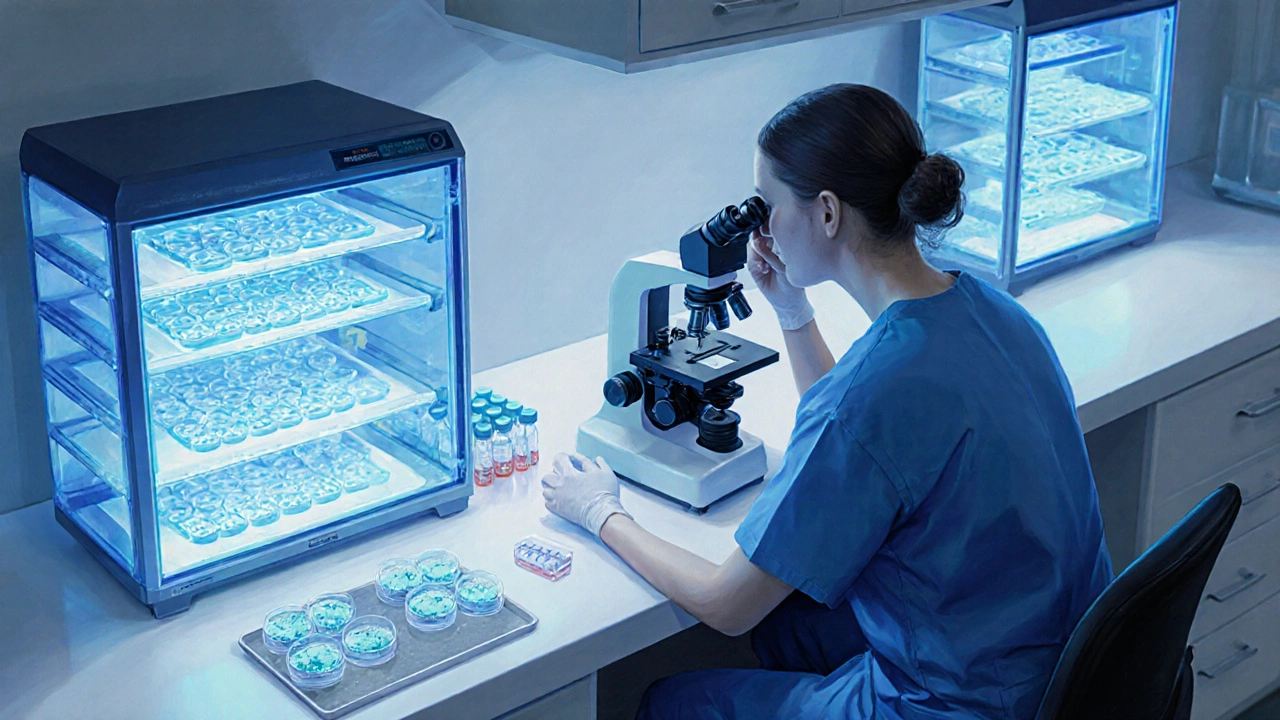
Price Variations Across Major Indian Cities
| City | Avg. Cost (INR) | Typical Clinic Range | Govt. Scheme / Insurance Aid |
|---|---|---|---|
| Bangalore | 1.8lakh | 1.5‑2.5lakh | CMCH Scheme - up to 40% off for eligible couples |
| Mumbai | 1.9lakh | 1.6‑2.6lakh | State Health Insurance - covers 30‑50% of drug cost |
| Delhi | 1.5lakh | 1.2‑2.0lakh | Delhi Fertility Subsidy - flat INR 30,000 discount |
| Chennai | 1.4lakh | 1.1‑1.9lakh | Tamil Nadu ART Assistance - up to 35% off drugs |
| Hyderabad | 1.3lakh | 1.0‑1.8lakh | No specific scheme, but private insurers increasingly cover IVF |
Notice that the drug cost component is the biggest driver of price differences. Clinics in Bangalore and Mumbai often use newer recombinant gonadotropins, which are pricier than the older urinary‑derived versions more common in Delhi or Chennai.
Factors That Can Push the Cost Up
Even within the same city, a few variables can cause the final bill to climb:
- Age of the woman: Older patients (>38years) usually need higher drug doses, sometimes doubling the medication bill.
- Donor gametes: Purchasing donor eggs adds INR 80,000‑1,20,000 per cycle; donor sperm carries a smaller surcharge.
- Pre‑implantation genetic testing (PGT): Detects chromosomal abnormalities; adds INR 25,000‑45,000.
- Multiple embryo transfers: While medically discouraged, some clinics charge extra for each additional embryo.
- Advanced lab technologies: Time‑lapse imaging or blastocyst culture can increase lab fees by 10‑20%.
Choosing an IVF clinic a medical centre that offers assisted reproductive technologies, including in‑vitro fertilisation with a strong success rate the percentage of cycles that result in a live birth, typically reported per age group often justifies higher upfront costs because it may reduce the number of cycles needed.
Government Support, Insurance, and Medical Tourism Options
India’s federal and state governments have introduced several measures to make IVF more affordable:
- Central Medical Assistance Scheme (CMAS): Provides a 30‑40% discount on stimulation drugs for couples below the poverty line.
- State‑specific subsidies: Delhi, TamilNadu, and Karnataka run their own ART assistance programs, each covering a fixed amount of drug cost or offering free initial consultations.
- Insurance coverage: A growing number of private insurers now list IVF under “reproductive health” benefits, covering up to 50% of the total after a waiting period of 12months.
- Medical tourism packages: Some hospitals bundle IVF with accommodation, transport, and post‑treatment care for foreign patients. Packages can start at INR 2lakh, which is competitive compared to many Western countries.
Before relying on any scheme, verify eligibility criteria, required documentation, and whether the benefit applies to the specific clinic you choose.
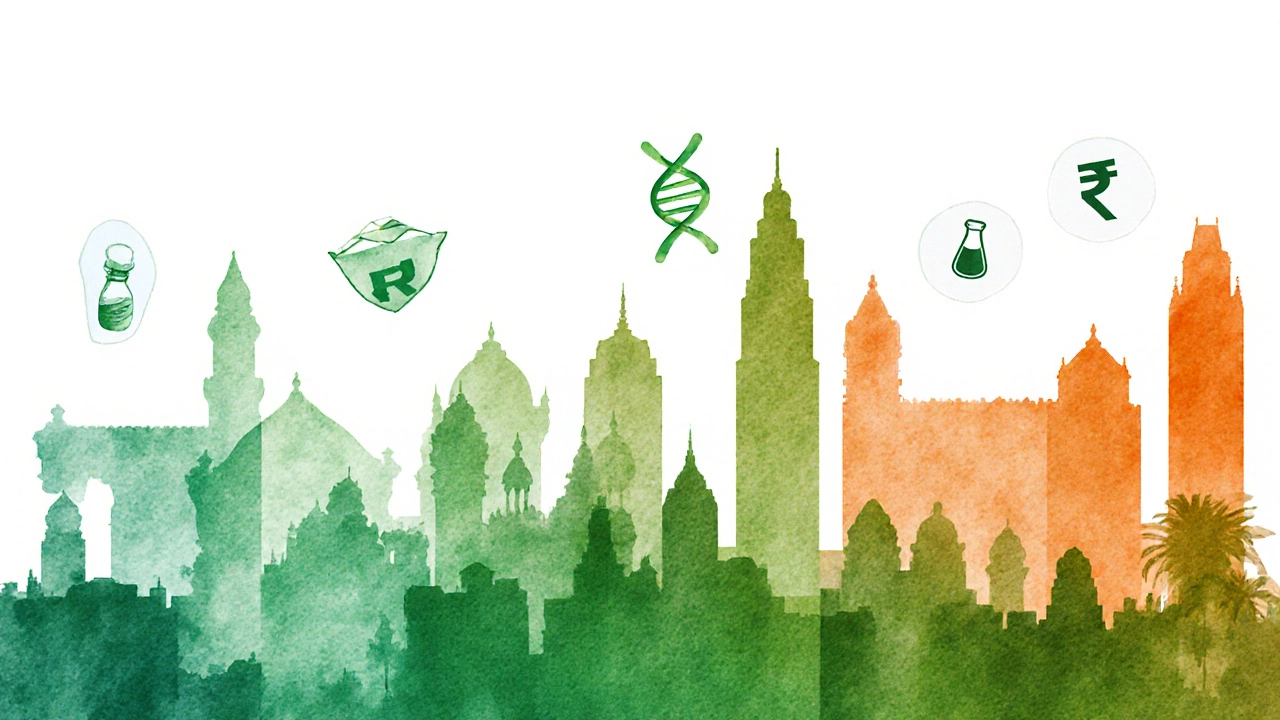
Hidden Expenses and How to Avoid Surprises
Even if a clinic advertises a “one‑price” package, you may encounter extra fees such as:
- Additional ultrasound scans beyond the standard monitoring schedule.
- Extra blood tests for hormone levels if the cycle is delayed.
- Storage fees for frozen embryos after the first year (usually INR 5,000‑10,000 per year).
- Administrative charges for paperwork, consent forms, and digital records.
Ask for a detailed itemised quotation before you sign any agreement. Clarify which services are included “as‑is” and which are billed separately.
Tips to Reduce Your IVF Bill
- Shop around for drug pricing: Some pharmacies sell recombinant gonadotropins at a discount if you present a prescription from a partnered clinic.
- Opt for a single‑embryo transfer: It lowers medication usage and reduces the chance of a costly repeat cycle.
- Use government schemes early: Apply for CMAS or state subsidies during the pre‑IVF work‑up stage to lock in the discount.
- Consider bundled packages: Clinics that include monitoring, lab work, and embryo freezing in a single fee often save you 10‑15% compared to à‑la‑carte pricing.
- Plan for post‑freeze storage: Some hospitals give a multi‑year storage discount if you pay upfront.
Ultimately, the most cost‑effective strategy is to choose a clinic with a high success rate for your age group, because a higher chance of pregnancy in the first cycle reduces overall expenditure.
Frequently Asked Questions
What is the average cost of a single IVF cycle in India?
For a basic cycle without donor gametes or advanced testing, most Indian clinics quote between INR 1.2lakh and INR 1.8lakh. Prices rise to INR 2.5lakh or more when you add extra services.
Do government schemes really cover IVF costs?
Yes. Schemes like CMAS, Delhi Fertility Subsidy, and TamilNadu ART Assistance can waive 30‑40% of stimulation drug costs for eligible couples. Eligibility usually depends on income, age, and residency proof.
Can insurance pay for IVF?
A growing number of private insurers list IVF under “reproductive health” benefits. After a waiting period (often 12months), they may reimburse 30‑50% of the total bill, subject to a cap of around INR 2lakh per year.
What hidden fees should I watch out for?
Extra ultrasounds, additional hormone assays, long‑term embryo storage, and administrative paperwork can add INR 10,000‑30,000 to the final receipt. Always request an itemised quote before starting.
Is medical tourism for IVF worth it?
Many overseas patients choose India for high‑quality labs at a fraction of Western prices. A comprehensive package-including flight, stay, and a full IVF cycle-can start around INR 2lakh, which is still cheaper than most European or US options.

